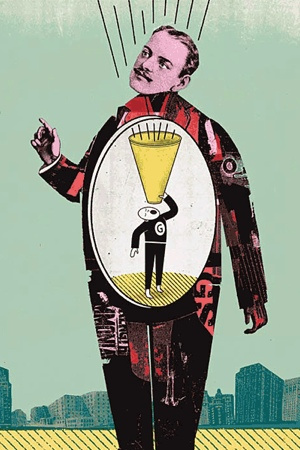The 7 Secrets of Successful Advertising (for 9-year Olds)
I’ve just had to explain advertising to 60 9-year olds.
Let me explain. My son’s class (year 4) is studying persuasive writing – they’re creating posters, radio and TV ads to promote their chosen country (in my son’s case, Norway) – so I offered my services to come in and give them some tips.
It’s a worthwhile exercise working out how you’re going to explain something to a room full of children. It forces you to go back to basic principles and simplify things – to drop the jargon we might use in a roomful of our peers just to prove we’re ‘one of the club’.
But why am I sharing this with you? Most of you, I’m sure, are older than 9. Well, many of us get so bogged down with the tools, the media we use to reach our audience, that we lose sight of the basics of marketing – human psychology and the principles of persuasion. I’m a great believer that the most important things for marketers to understand are human beings and how and why their brands appeal to them, and not get too bogged down with the technical detail of how some of the tools our trade work.
OK, enough preamble – if you were a 9 year old, you’d be fidgeting in the front row by now. Here are the 7 principles of successful advertising I shared with my son’s class.
1. Know Your Audience
Pretty fundamental and I know I’m teaching my grandmother to suck eggs, metaphorically speaking but I’m still surprised (well, a little shocked really) when I hear my peers talking about pushing destinations, hotels, room types, airline seats etc and not talking about the types of people they’ll be marketing those things to.
2. Grab Their Attention
I did my research and found out that estimates as to how many ads the average adult consumes in a day vary from 300 to 3,000. Clearly, if you want to deliver your desired message, you’ve got to get people’s attention first. To do that, you have to ignore your fundamental human instinct to fit in, and work out how you can stand out. You need to study what everyone else is doing and then do something that none of them are. That’s not as easy as it sounds, and it means you’re going to need to take some risks.
I worked on the very latest ‘Find Your Amazing’ TV ad for Kuoni (including an arduous trip to the Maldives to supervise the shoot – I don’t need your sympathy) and the first half of the ad was all about capturing the audience’s attention. Of course, a woman walking on water is pretty likely to capture somebody’s attention but, in this case, don’t underestimate the power of the music. The fact it started almost inaudible, compared to the instantaneous blaring of the ads surrounding it was just as important – it made people look up from what they were doing and give it their undivided attention.
3. Talk About Features, Not Benefits
This was the very first thing I was taught as a early 20-something graduate selling advertising space for Marketing Week. It means, don’t talk about your product, talk about what your product can do for your audience.
So for my son’s Norway promotion, I told him not to talk about the mountains but tell people what they can do in the mountains – walk, cycle etc. Tell a story and place your audience in that story as the leading characters.
4. Make Them Like You by Using People Like Them in Your Adverts
Showing your audience ‘people like them’ in your ads works on a couple of levels. It makes them like your brand more – people like people like them – and it provides a degree of social proof (I want to buy a product which other people like me buy).
Remember, people often buy things – particularly premium goods – to bridge a gap between their self perception and how they’d like to be perceived. They want to look at idealized versions of themselves – better looking, younger – rather than reality.
5. Tell Them What to Do Next
Ignore your advertising agency here, who want you ad to look all beautiful and clean and not get cluttered up with a call to action. If you tell someone what to do, they’re more likely to do it – it’s just the way we’re programmed. If you want your ad to exist as a work of art, then leave a CTA out. If you want it to deliver some sort of commercial return, put one in.
6. Make Them Think That If They Don’t Do Something Now, They’ll Miss Out
Again, we’re back to the fundamentals of human psychology – sales and limited time offers work because we hate to miss out. Nothing seems more desirable when it’s about to be taken away. Just witness the mayhem that Black Friday unleashed.
7. Always Include Your Logo and Strapline
Ok, I really am teaching my grandmother to suck eggs now. Nuff said.
That’s not a comprehensive list (I’m a sucker for alliteration and ‘7 Secrets’ sounded so much better than ‘8 secrets’) but it’s a not a bad little checklist and I hope you find it useful.
The other the piece of advice I’d give based on this little exercise? Next time you’re explaining your product, strategy (or anything really) to a roomful of your peers, imagine you’re writing it for a 9-year olds. Jargon clouds your meaning – simplicity is the key to successful communication, whether you’re talking to your peers, your customers or a roomful of children.



